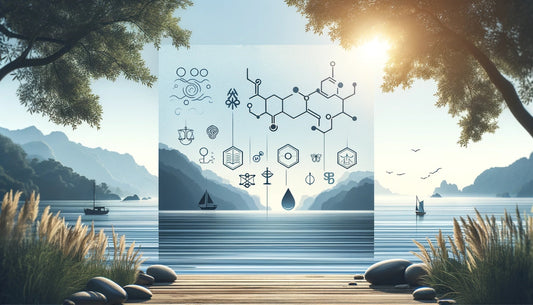As we age, we look and feel older. It’s something we tend to accept because that is “just the way it is”. Our skin starts to sag and wrinkle, we lose muscle, our bones become weaker, and our brain doesn’t function as well as it used to. None of this is particularly insightful, but we are now discovering some of the causes of these signs of ageing. It is thanks, in part, to three unlikely mammals: the naked mole rat, the bowhead whale, and the microbat.
The good news is that there are a number of things we can do to help us age more healthily – see the end of this article for our top tips and health hacks.
How was this discovery made?
When looking at mammals in the animal kingdom, scientists noticed that there are a few significant outliers in how long different mammals live. Researchers therefore started to look at why this is the case (14).
- Did you know that most whales live between 40-90 years? There is, however, a class of whales called bowhead whales that can live to the ripe old age of 200 (1).
- In rodents, although most live for 2-6 years, the naked mole rat lives to around 35 years old.
- Most bats live for up to 20 years, but the microbat lives on average for 41 years.
What longevity secrets were discovered from the bowhead whale?
Scientists studied the genetics of all three of the above animals and made an exciting discovery. They noticed that bowhead whales, microbats, and naked mole rats have a much more active sirtuin 6 gene than other mammals. This means they make more sirtuin 6 protein (also known as NAD-dependent deacetylase sirtuin-6.) This discovery has led to sirtuin 6 becoming a target of increased research into human healthspan and lifespan (2).
How does the sirtuin protein help animals to live longer?
After discovering the “what”, we want to understand the “how” this protein makes animals live longer. Sirtuins do a number of things, but most importantly they are essential in repairing damage to DNA. Why is that important? Well, by repairing DNA the number of abnormal cells is reduced – it is these abnormal cells that lead to cancer and the loss of function of vital organs (3).
This is caused by internal and external factors:
- Internal: uncontrolled sugar levels (4), poor gut health (5), and a diminished detoxification system.
- External: UV radiation, pollution or cigarette smoke or exposure to everyday chemicals in our cosmetics, air and food.
What is the difference between a sirtuin gene and a sirtuin protein?
What do sirtuins do in the body?
It is important to recognise that sirtuins’ activity is not just about DNA repair. They are also linked to metabolic control (how the body creates energy), apoptosis (the process by which we get rid of old worn-out cells), cell survival, cell development, our immune system and inflammation. It is no wonder that sirtuins are now considered such key regulators of healthy ageing and lifespan. They help to manage our metabolism whilst also reducing our risk of producing tumourous cancers. That could mean less cardiovascular and heart disease, less dementia and less cancer, the three leading causes of death in the UK.
As we age, we encounter a bit of double of whammy:
- DNA damage accumulates. A bit like a car with 100,000 miles on the clock, it still works, but there are more dents and worn-out parts that require more attention.
- The repair machinery, the sirtuins, starts to slow down and become less efficient.
Why do sirtuins slow down? Well, the clue is in the name, NAD-dependent deacetylase sirtuin-6. Sirtuins are dependent on NAD and, as we age, NAD levels drop to around 50% by middle age (7).
How can I boost my sirtuins?
In short, we need to increase the production of sirtuin proteins and give them the fuel (NAD) to work. This can be done in a number of ways:
- Exercise. Physical exercise affects the amount of sirtuins in our muscles and this also increases the number of mitochondria, the energy generators in our cells. A single bout of hard exercise will activate sirtuins. Several sessions work even better and bring about profound changes in energy production and sirtuin activity (8).
- Deliberate cold exposure. This causes changes to our metabolism leading to a change in our fat from bad beige fat to good brown fat. This change in metabolism lowers cholesterol and triglycerides. It also increases sirtuin activity (9).
- Short term intermittent fasting slows and reverses ageing and cardiometabolic disease. This stimulates the liver to activate sirtuins. It also stimulates NAMPT which is the enzyme that synthesises NAD+ levels increase and the amount of sirtuin protein present is increased. (10).
What can I take to boost my sirtuins?
Some compounds, both natural and synthetic, called sirtuin-activating compounds (SACs), can replicate conditions of low cellular energy. Sirtuin activating compounds attach to sirtuins, changing their affinity for NAD+ and their protein substrates, which then boosts sirtuins’ activity. More and more research is suggesting that SACs could be useful in treating metabolic problems and age-related diseases. Here are some of the best-researched and most readily available SACs:
- Nicotinamide mononucleotide (NMN) increases the levels of NAD+ in our cells, thereby stimulating the activity of sirtuins (7) as well as increasing cellular energy production. By manipulating the levels of NAD+ in cells, we may be able to develop interventions for ageing. As we age our NAD+ levels are degraded more quickly by an enzyme called CD38. This final part of the sequence, and why it happens, is still not clear (11).
- Resveratrol, a polyphenolic dietary compound found in red grapes, has powerful sirtuin-activating properties that protect against type 2 diabetes, cardiomyopathy, and cancer (12).
- Pterostilbene, a polyphenolic compound that is related to resveratrol, is found in blueberries, cranberries, and almonds. It has similar effects as resveratrol (12).
- Metformin, a drug commonly used to treat diabetes, also demonstrates potent sirtuin-activating capacity. Like resveratrol and pterostilbene, metformin binds to specific sites on SIRT1. This in turn improves the enzymatic efficiency of SIRT1 when cellular levels of NAD+ are low (13).
Summary
Long-lived mammals have highly active sirtuin proteins. Research and animal studies have shown that activating these proteins leads to better health and an increased lifespan.
Once again, exercise and control over our metabolism seems to be key. We know from multiple retrospective studies that a sedentary lifestyle and poor diet is bad for our health.
NMN, resveratrol, pterostilbene, and the prescription drug metformin all increase sirtuin activity.
The key point is that our longevity and how healthily we age is, to a large extent, within our control. There is plenty we can do to stimulate our sirtuins in order to help us not just feel better today, but to live in better health for longer.
Bibliography
3. Sirtuins in metabolism, DNA repair and cancer Mei, Zhang et al J Exp Clin Cancer Res 2016
4. Links between metabolism and cancer Dang Genes Dev 2012
5. How gut bacteria could boost cancer treatments Erdmann Nature 2022
6. Introductory Review on Sirtuins in Biology, Aging, and Disease
8. Exercise and Sirtuins: A Way to Mitochondrial Health in Skeletal Muscle Int J Mol Sci 2019







